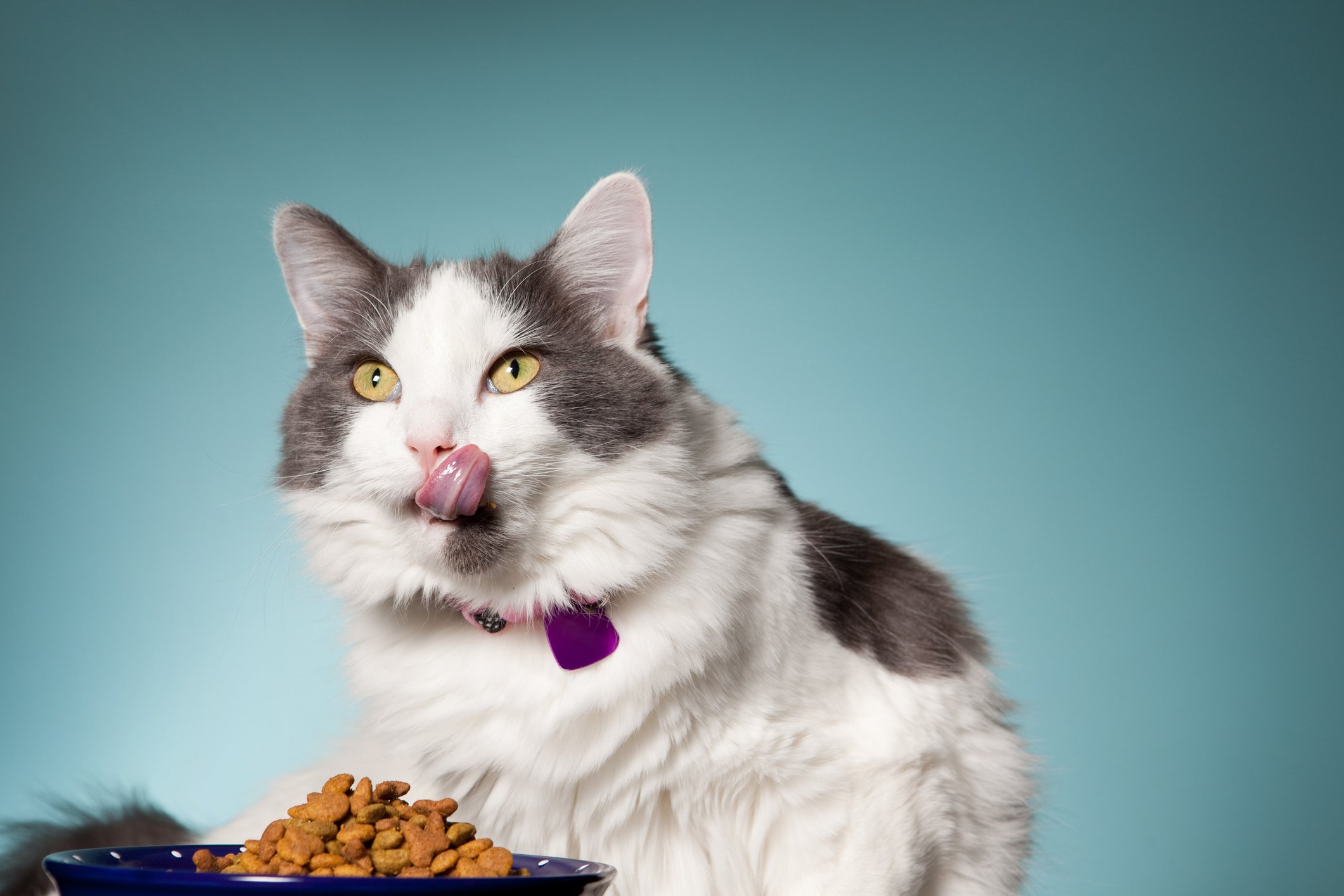© sdominick/Getty Images

On the surface, food allergies may appear to be straightforward — the body reacting negatively to something ingested. When taking a closer look, however, food allergies are considerably more complex than that, and often require much trial and error to reach a solution.
Simply put, adverse reactions to food occur when a typically harmless ingredient is ingested and distinct clinical signs appear. “A food allergy is a response to a food — usually a protein in the animal’s diet — that involves the immune system. The immune system regards the protein as a foreign invader and provokes an immunologic response resulting in inflammation,” explains Cailin Heinze, VMD, MS, a board-certified veterinary nutrionist at the Cummings School of Veterinary Medicine at Tufts University.
Signs of food allergies
“In cats, this can show up as skin irritations such as itching, scratching or licking excessively. They can be prone to developing skin infections and you can actually see changes in how their skin looks,” says Dr. Heinze. Some of the visible changes include skin irritations, redness and bumps that can occur all over the cat’s body.
Other signs of food allergies involve the gastrointestinal tract, and can include vomiting and diarrhea. According to Dr. Heinze, the biggest challenge is that not all cats show both signs. Some cats may show just skin signs and others may show only gastrointestinal signs — both of which can be from a large number of other causes.
Environmental allergies to pollen, dust mites, mold or fleas are other culprits causing skin irritation, whereas a food intolerance is also just one possible cause of GI upset. “Many times when a cat has gastrointestinal signs and the owner has changed the food and the cat improves, the owner assumes the cat had a food allergy when it’s more likely there was some other factor in the diet the cat was responding to,” says Dr. Heinze. Further complicating matters is that it is possible to have concurrent allergies (food and environmental) and food intolerance.
Food allergies take time to develop; believe it or not, the cat may have been eating the same food for months (or even years) before the reaction manifests. Food allergy is an equal opportunity condition affecting both genders, altered or intact, with no predilection for breed or age. Studies show that pets can be affected as young as two to six months of age, up to 14 years (with the typical onset around two years old for cats).
Most common allergens
The most commonly identified allergens for cats are fish, beef and chicken, but may also include pork, dairy products or eggs. However, cats can also become allergic to exotic meats such as venison, duck, bison or kangaroo. Therefore, feeding less-common proteins does not necessarily prevent food allergies from developing.
No one really knows exactly how many cats are affected by food allergies, and Dr. Heinze feels that it is much less common than most cat owners believe. For one thing, many suspected cases are never appropriately confirmed. “Saliva tests and blood tests are not good ways to diagnose food allergies because they’re really inaccurate.
“The most reliable way is to obtain a detailed diet history of every single food the cat has been exposed to, and then to pick a diet that contains different protein and carb sources or a hydrolyzed diet, where the protein is chopped up into small pieces to avoid detection by the immune system,” says Dr. Heinze.

How a food trial works
The elimination diet — or food trial — should be fed for a period of four to 12 weeks with nothing else. This includes treats, medications (medications should be evaluated because, for example, some gelatin capsules can have a protein base or source and many are flavored), no sneaking bites of another pet’s food, and no mice, rabbits, insects, etc. for indoor/outdoor cats.
“We feel very strongly that the diet needs to be a therapeutic diet, and that you’re using it as a diagnostic tool. If the cat does very, very well on that diet they can generally stay on them long term, but it is more ideal to get them back on a diet that’s easier for the owner to obtain,” says Dr. Heinze.
A change in diet is difficult for some cats, and they may be reluctant to eat a new food. Depending on your cat’s food history, your veterinarian may be able to recommend several appropriate choices from which your cat can choose a favorite. Because a cat’s intestinal tract is sensitive, the transition period to a new food should be slow, usually three to five days. Don’t force your cat to eat or starve your cat if she won’t eat the new food. Continue offering choices until a preferred food is chosen. A cat that misses several meals faces the risk of hepatic lipidosis — otherwise known as fatty liver disease — which can be life-threatening.
If during the diet trial period the signs improve substantially or resolve completely, a food allergy (or intolerance) is suspected. To confirm the diagnosis, the cat is then challenged with the reintroduction of the original diet. Response time for signs to reappear varies from 15 minutes to several days, depending on the type of signs. If they relapse, you should switch back to the diet that was successful, now knowing that an ingredient in the original diet caused the signs.
To further narrow down the offending ingredient, you can introduce one ingredient of the original diet at a time to the successful, diet and look for a reaction. If no negative signs appear after two weeks, another ingredient could be added. If clinical signs reoccur, it would be safe to assume that that ingredient is an allergen.
If you suspect your cat has a food allergy, Dr. Heinze stresses the need to work closely with your veterinarian as opposed to constantly switching diets at the pet store, looking for the one that will work for your cat.
Proliferation of novel proteins
“There aren’t any new protein sources available in pet food any more with the proliferation of foods made with exotic meats such as bison, duck, rabbit and kangaroo. The more diets an owner keeps trying at home before getting veterinary assistance, the more difficult it’s going to be when they do see their vet for a trial diet,” stresses Dr. Heinze. “We’re finding it necessary to move more and more to feeding hydrolyzed protein diets that are only available through veterinarians, and they may be less palatable and are quite expensive.”
Dr. Heinze emphasizes that all appropriate diets for a food trial are only available from veterinarians and that over-the-counter options should be avoided, including the “novel” protein diets. By trying to avoid food allergies and feeding lots of different and exotic proteins, many companies and pet owners are actually creating a bigger problem by making it very difficult to diagnose food allergies if they do develop.” (See related sidebar at right.)
Although food allergies can be managed by avoiding offending allergens, a true food allergy is a difficult condition to diagnose, and some owners don’t want to go through the drawn-out process of elimination.
According to Dr. Heinze, “Unfortunately, the only solution we have right now is the detailed diet trial, and while it’s understandable that people want look for other options, there is no quick solution to sort out the allergy conundrum in cats.” — Ramona Marek, MS Ed.




